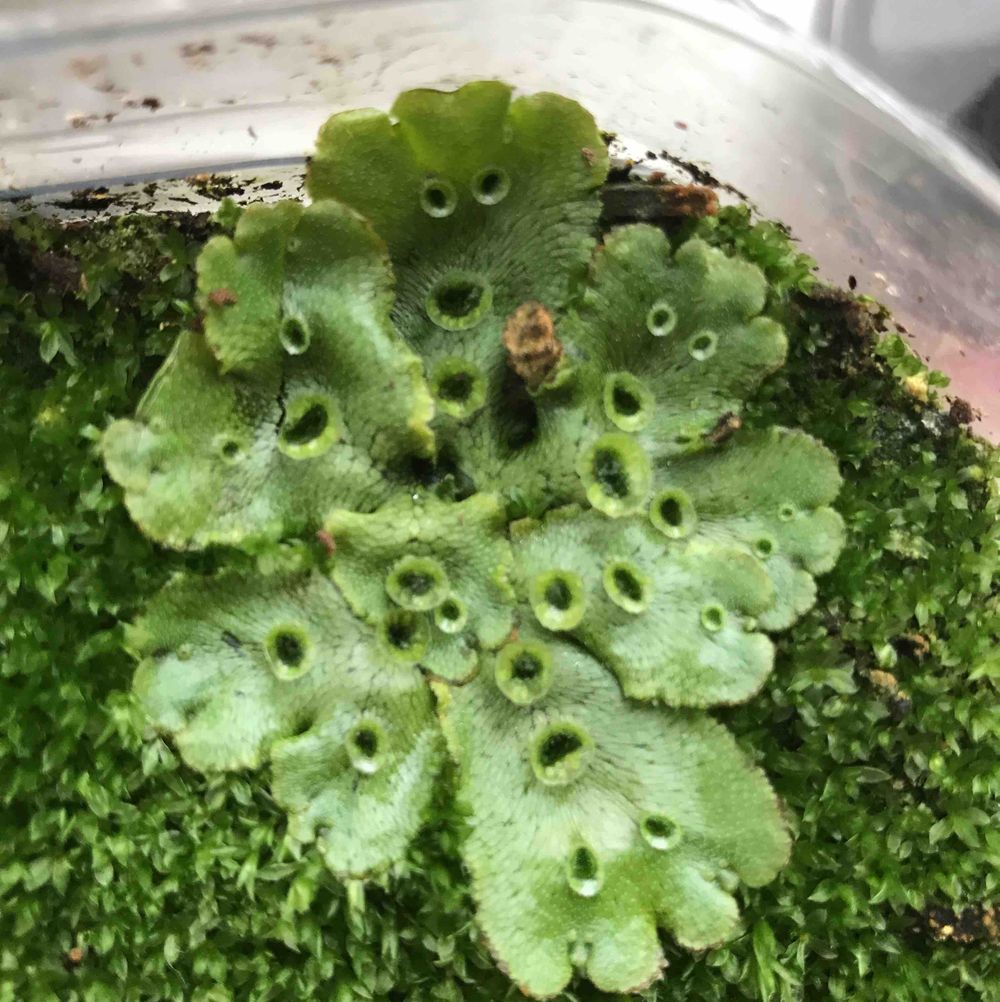Common liverwort
(Marchantia polymorpha)

Description
Marchantia polymorpha, sometimes known as the common liverwort or umbrella liverwort, is a large liverwort with a wide distribution around the world. It is variable in appearance and has several subspecies. It is dioicous, having separate male and female plants. It is a thallose liverwort which forms a rosette of flattened thalli with forked branches. The thalli grow up to 10 cm long with a width of up to 2 cm. It is usually green in colour but older plants can become brown or purplish. The upper surface has a pattern of hexagonal markings. The underside is covered by many root-like rhizoids which attach the plant to the soil. The plants produce umbrella-like reproductive structures known as gametophores. The gametophores of female plants consist of a stalk with star-like rays at the top. These contain archegonia, the organs which produce the ova. Male gametophores are topped by a flattened disc containing the antheridia which produce sperm. This species reproduces asexually by gemmae that are produced within gemmae cups. Gemmae are lentil shaped and are released by droplets of water. Plants produced in this way can expand a patch significantly.
Taxonomic tree:







